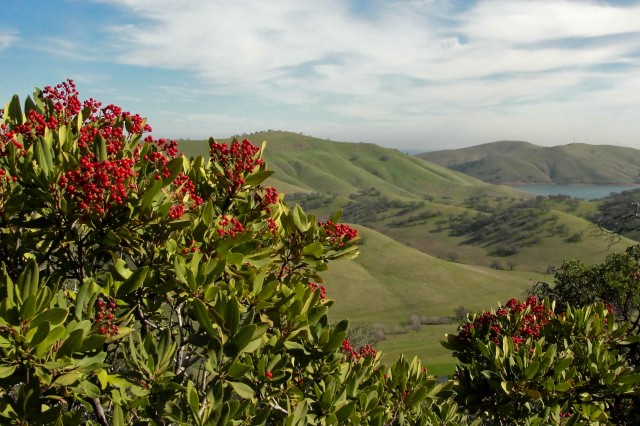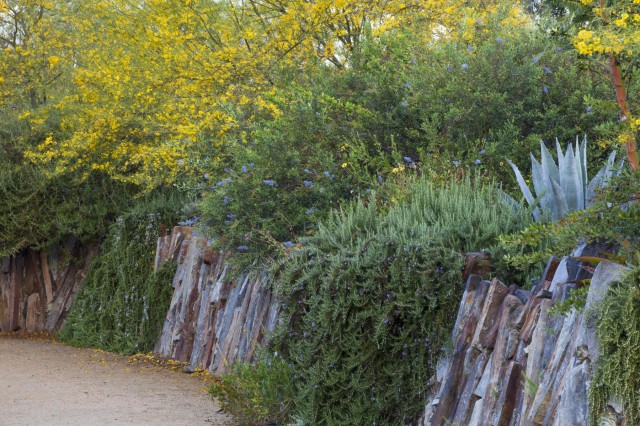Water-Wise Winter
Our water-frugal horticulturists share their knowledge about winter gardening. Learn more about drought-tolerant plants like the red-berried toyon below.
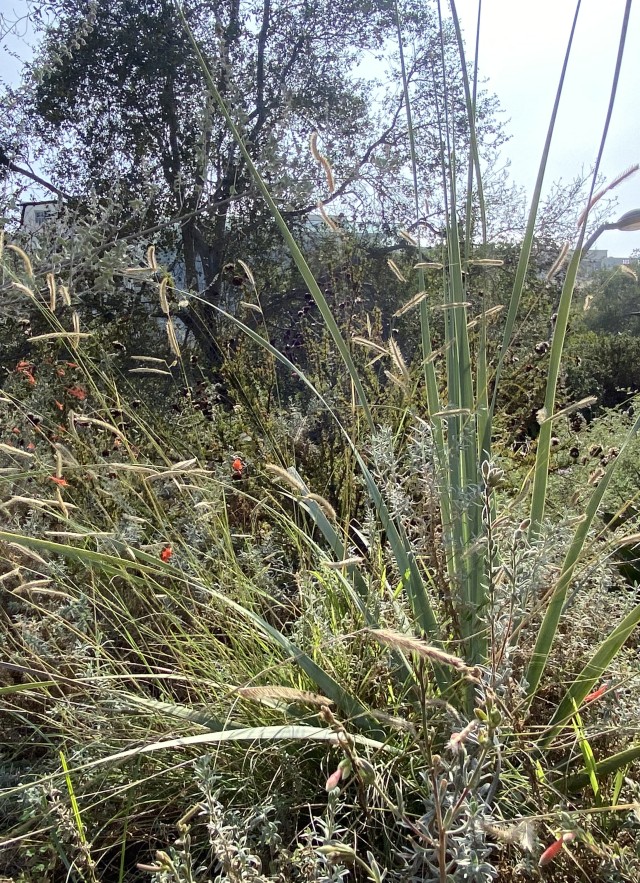
Published December 2, 2022
TOYON
The toyon (Heteromeles arbutifolia) is most easily recognizable by the bright red berry-like fruit that inspires its other common names: the California Holly and the Christmas berry. These perennial, drought-adapted shrubs grow quickly at home, reaching as high as eight feet in a couple of years, but some amazing specimens in the Los Padres National Forest have been documented at 30 feet. Not bad for a shrub! Their fruit are favorites of avian Angelenos like the cedar waxwing, and Toyon also attracts four species of butterflies and moths. Their crimson fruit adds a festive feel to any garden, including ours.
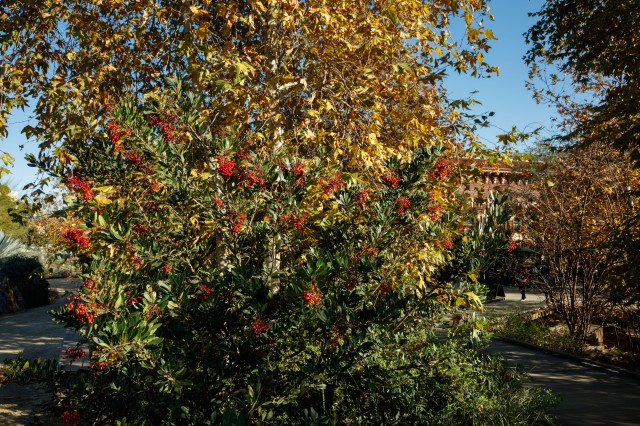
Fast growing and hardy, toyon is a reliable plant for attracting pollinators.
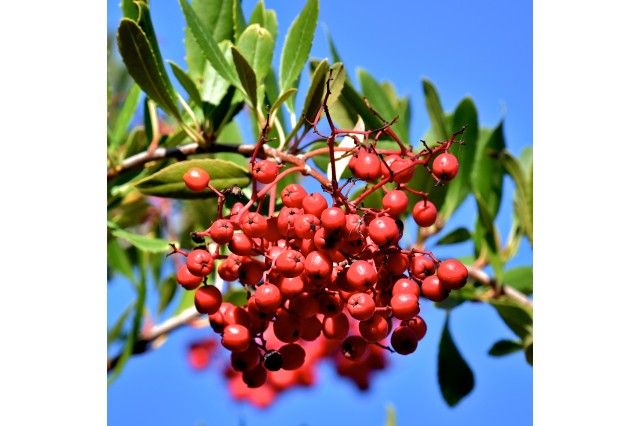
Birds love toyon's bright red berries.
1 of 1
Fast growing and hardy, toyon is a reliable plant for attracting pollinators.
Birds love toyon's bright red berries.
Southern California winters usually bring a few well-needed soaks from seasonal rainfall. With California’s ongoing drought, making the most of rainfall is even more important. Daniel Feldman, the Senior Manager of Horticulture for the Nature Gardens, and Horticulturist Kristen Barker know how to give the rain a good welcome. They have practical botanical wisdom to share, born from many seasons of selecting, planting, pruning, and harvesting in this semi-arid Mediterranean climate.
Here are three ways to save the raindrops so they can feed your greens.
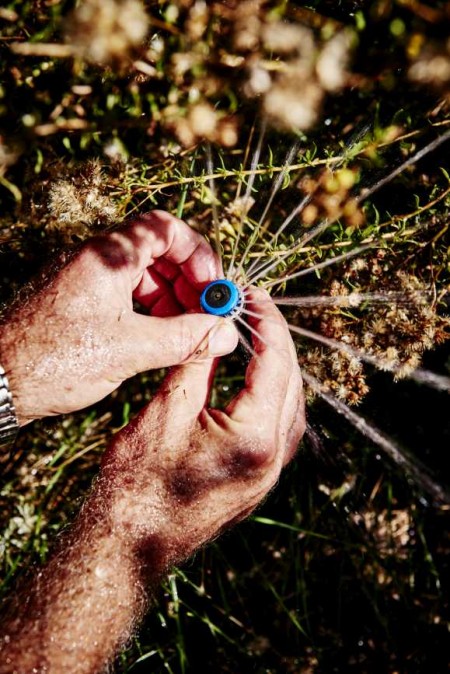
Get Soil Savvy
Rather than a hard-and-fast timeline of irrigating every three days, get to know your soil by checking its moisture level. "Dig down a few inches and grab a handful of soil. If the soil stays clumped together, you can postpone watering," Barker says.
"However, if it's dry and crumbly, that's a good indication that it's probably time to water again. With adequate rainfall in the winter, your soil can stay moist for a decent period of time and won't need supplemental irrigation for a while."
Mulch Madness
“Mulch is always a good recommendation for fruit trees to retain whatever moisture there is, and then you have to water even less,” said Feldman. "In addition to retaining moisture, mulch also suppresses weeds, keeps soil temperatures cooler, and adds organic material to the soil."
Barker, who manages the Edible Garden, said they will generally do this re-mulching of the fruit trees in January at the same time that they are fertilizing and pruning them.
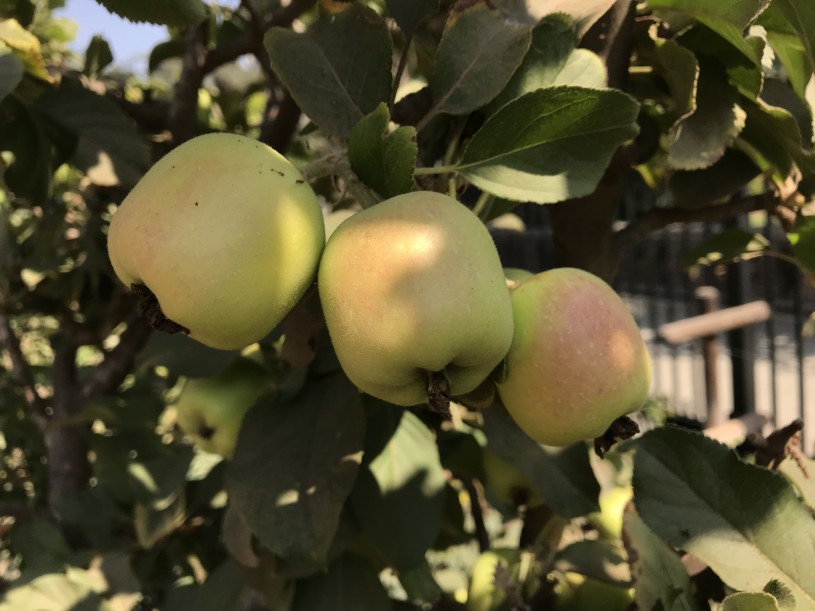
Compost Time
Healthy soil in the Nature Gardens is made of living, breathing things as well as oxygen, minerals, and water. There can be a billion microorganisms in a teaspoon of healthy soil, which acts like a sponge, holding and releasing water and nutrients when needed. Increase your soil's health by adding good-quality compost to your garden on a regular basis. You can make that at home with garden clippings and food scraps.
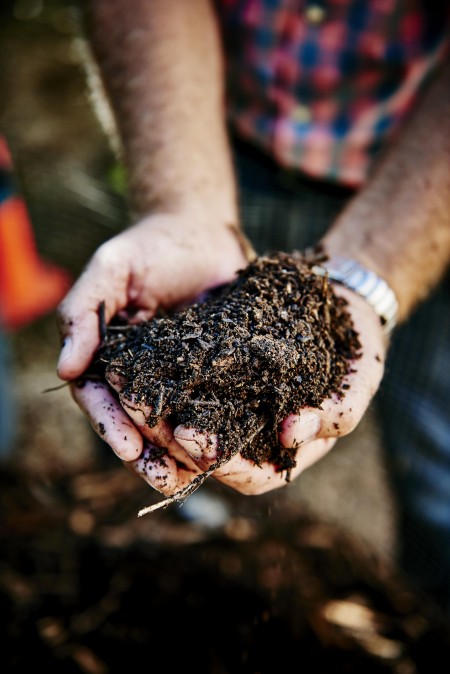
Meet Daniel Feldman, NHM's Senior Manager of Horticulture, as he identifies this season's Nature Gardens showstoppers!
How Does Our Garden Grow?
When it was established in 2013, the Nature Gardens was designed to keep moisture on site through topographical features that allow for groundwater recharge. Our experts also employ greywater capture and smart irrigation techniques. The horticulturists also installed California natives and other climate-appropriate plants from other Mediterranean regions.
Read the story below for details on how we built—and continually nourish—this urban oasis.
A big thanks to our sponsor

